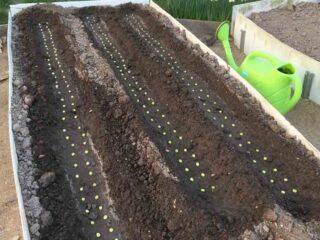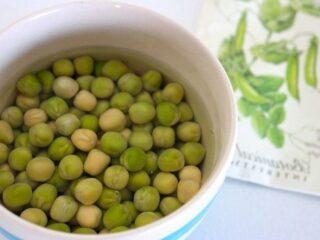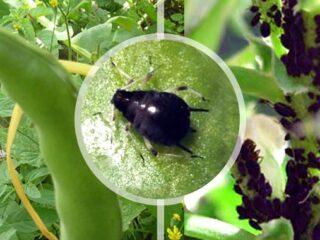Content
Most gardeners prefer to grow peas in the country. After all, its sweet juicy fruits can be eaten fresh, frozen, or canned. But few gardeners know that peas can be used as green manure. But it is capable of enriching the soil within one season. However, to use a crop as an organic fertilizer, you need to know when to sow and mow it to get maximum benefit.

Peas as green manure are an excellent alternative to manure and mineral fertilizers
What are peas as green manure?
Peas, like all members of the Legume family, have the ability to accumulate nitrogen on their root shoots. Therefore, its use as green manure is completely justified. The culture is also characterized by rapid growth and the accumulation of a large volume of mass. Adding peas to the soil improves its structure and increases breathability.
Peas as green manure help inhibit the growth of weeds and reduce the likelihood of the development of pathogenic microflora.This contributes to a generous harvest of crops grown on the site next season. As well as improving the taste of the collected fruits.
Pros and cons of peas as green manure
Using this legume as a green manure has many advantages. Therefore, experts recommend considering peas as an effective organic fertilizer. Also, using it to enrich the soil with nutritional components has certain disadvantages that need to be taken into account.

Peas accumulate the maximum amount of nutritional components during budding
Main advantages:
- accelerated development;
- high efficiency;
- affordable cost of planting material;
- quick results;
- cold resistance;
- suppresses weed variety;
- enriches the soil with nitrogen, phosphorus, potassium;
- reduces soil acidity;
- increases soil aeration;
- releases phytoncides.
Flaws:
- does not gain the necessary green mass on acidic, heavy soils;
- not suitable for late autumn planting;
- may not be used for all cultivated crops.
For which crops is it suitable?
Peas as a field green manure contribute to a generous harvest of not only nightshade plants, but also other plants.
Experienced gardeners recommend using it in areas under;
- white cabbage, cauliflower;
- potato;
- tomatoes;
- eggplant;
- carrot;
- beets;
- zucchini;
- cucumbers
This legume also has a beneficial effect on neighboring plants. It is best to plant onions and garlic next to it.
When to sow peas for green manure
This plant is characterized by increased resistance to cold.Pea seeds germinate already at a temperature of +5-6 °C, and adult plants can withstand frosts down to -4 °C. The duration of the growing season for this legume is 60-80 days.
Experts recommend using this type of green manure for early spring sowing before planting the main plants, as well as in the second half of summer after harvesting from the garden.
In the first case, sowing should be carried out when the soil warms up to the required temperature. To speed up germination and protect seedlings from birds, the area should be covered with agrofibre.
In the second case, peas may suffer from soil pests and pathogens. Therefore, before sowing green manure, it is necessary to clear the area of plant residues and treat the soil with a 3% solution of copper sulfate.

Peas can be used to enrich the soil in greenhouses and open ground
Features of growing peas as green manure
In order for the procedure to give the desired result, it is necessary to properly plant and care for the plant taking into account its requirements.
First you need to dig up the area, remove weed roots and thoroughly level the surface. Planting should be done in rows at a distance of 15 cm. Seeds should be spread at intervals of 3-4 cm. The recommended planting depth on light loose soil is 4-5 cm, and on heavy loamy soil - 3 cm. After the procedure, water thoroughly.
To enrich the soil with nutritional components, it is recommended to use 15-20 g of green manure planting material per 1 square meter. m. If it is necessary to also suppress the active growth of weeds, sow peas more densely at the rate of 27-30 g for the same area size.
At an early stage of growth, this legume crop is very sensitive to lack of moisture. Therefore, it is recommended to water the garden bed regularly in the absence of seasonal rains. In case of hot weather, moisturizing should be done daily in the evening or morning.

Pea seeds germinate in 8-10 days if conditions are favorable.
For successful growth of green manure, soil loosening is necessary. This will provide air access to the roots for full development. The first time you need to loosen the row spacing is on the 5-7th day. Then repeat the procedure every other week. And then carry out loosening as the soil surface compacts.
Peas as green manure for potatoes and other crops do not need to tie the shoots to a support. But if necessary, this problem can be solved by planting together in rows with phacelia or lupine. If wireworms appear on the site, it is recommended to combine peas with mustard, the smell of which repels the pest.
When to mow and how to bury
In order for green manure to benefit crops subsequently grown in this area, it must be mowed correctly and used in the future. Otherwise, the effectiveness of organic fertilizer will not only decrease, but may even be completely lost.
Main stages of soil greening:
- Cut the peas with a flat cutter 2 cm below the soil level during budding. Since with longer growth its shoots become coarser, this leads to long subsequent processing.
- Spread the collected greens on the surface of the soil and water generously.
- To speed up the processing of plant mass by soil organisms, it is necessary to cover it with a layer of humus 1-2 cm thick and pour it with a solution of any EM preparation.
- Leave for two weeks, as the decomposition process releases toxins that inhibit the development of crops. And after this time, they move into the deep layers of the soil and become inaccessible to the roots.
- In the future, you can plant the main crop by making holes in the mulch.
You can use peas to enrich the soil in another way. In this case, it is recommended to mow the green mass at the base and use it in the compost heap. And the remaining pea roots in the soil will gradually decompose, providing a breeding ground for soil microorganisms and earthworms.
Liquid fertilizer from peas
Experienced gardeners also recommend preparing liquid organic fertilizer based on this legume. It is suitable for feeding all agricultural crops at the initial stage of growth.
To prepare it, you need to tightly compact finely chopped pea shoots and leaves into a plastic container. Then the green mass must be filled with warm water so that the liquid completely covers it. Keep the fertilizer in direct sunlight for 2-3 weeks until the fermentation process is complete. As the water evaporates, it must be added to the previous level.
The resulting concentrate is recommended to be used for root feeding. Before use, it is diluted with water in a ratio of 1:3.

Liquid fertilizer based on peas has a high content of nitrogen and potassium
Advice from experienced farmers
There are several features of using peas as green manure, which experienced gardeners recommend paying attention to. This will help you avoid serious mistakes.
Basic recommendations:
- It is not recommended to plow the above-ground part of the plant into the soil, since green manure simply rots under a layer of soil without oxygen. This leads to the loss of 80% of the nutritional components contained in it.
- Do not grow peas before fruiting period. In this case, the plant loses most of the nutritional components, as it directs its forces to the formation of pods.
- You can sow dry seeds of this legume. But if you pre-soak them for four hours in warm water or a growth stimulant, this will significantly speed up and improve germination.
Conclusion
Peas as green manure help to enrich the soil and improve its structure in the shortest possible time. Moreover, its cultivation is not difficult even for beginner gardeners. After all, peas are an undemanding crop that is little susceptible to temperature changes. And this makes it possible to use it in early spring and after harvesting from the garden.








